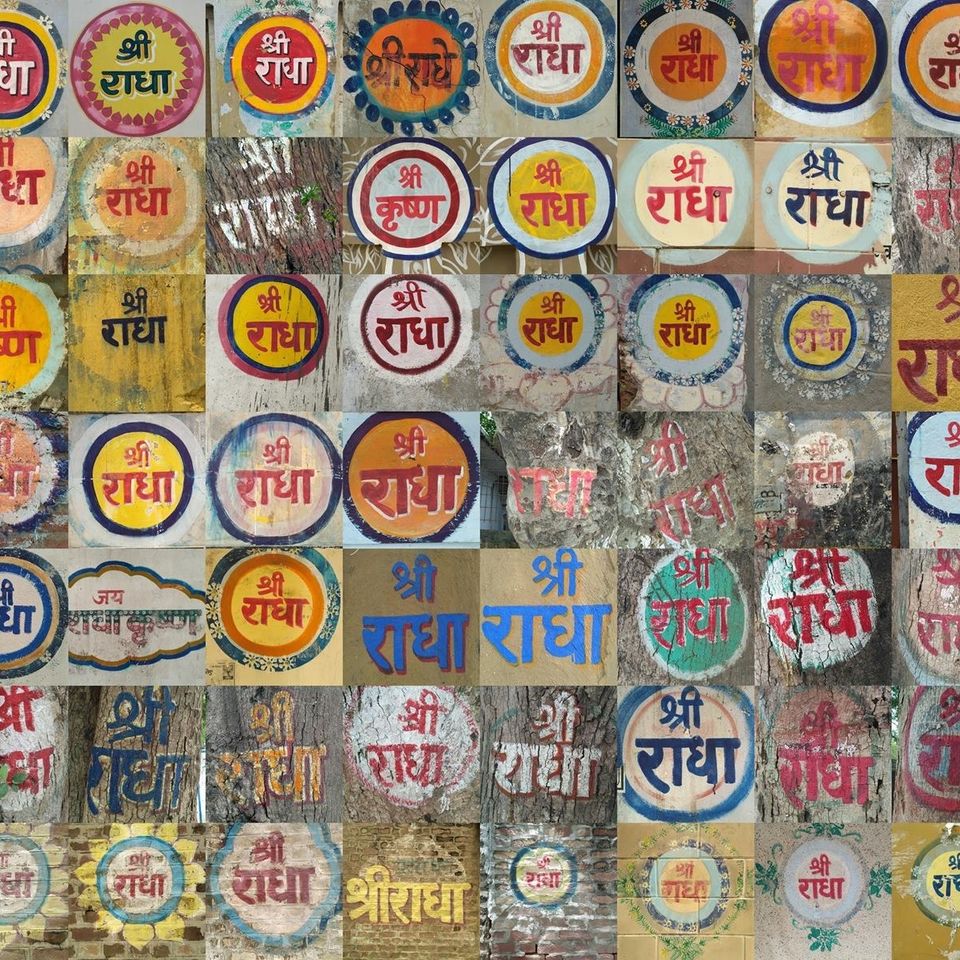71-76 Rādha’s śriṅgara
Verse
71
Then Radhika-sundari moves to the sringara vedi (seat where Radha is dressed
and decorated) and sits down. When a girl becomes a nava-kishori, (a woman in
the fresh flower of youth - 13-15 years old) Cupid takes advantage to dress her with erotic
desires and gestures. Similarly, the skillful sakhis dress and decorate
Praneshwari Rai just befitting the morning time.
Rasa-tarangini Tika:
The description of Radha's sringara extends up to verse 103. Adding to
Srimati's appearance is her captivating new youth that further decorates her
with twenty bhava-alankaras beginning with bhava, hava and hela.
The Radha-prakarana of Ujjvala-nilamani (chapter 4) tells that Radha has
sixteen items of dress and twelve types of ornaments (dvadasha abharana). These
items will all be described in the upcoming pages.
Verse 72
Lalita Devi uses a special comb made from ivory and inlaid with gems named
Svastida (giving well-being) to comb Radha's hair, which has been dried by the
scented smoke from burning aguru crystals.
Rasa-tarangini Tika:
In Krishna-bhavanamrita, Sudevi (one of the eight main sakhis) performs this seva. The fine part that she
makes in Radha's hair, appears like the pathway of Cupid. Those who remember
this part will vanquish their sins! This part is the heavenly river where the
elephant of Krishna's heart constantly bathes! Moreover, the eyes of Radha's
companions sail on this river like sailboats!
Verse 73
Lalita decorates Radha's hair with bakula flower malas and strands of pearls.
Then she ties it into a colorful veni with red silken ribbons which end in
tassles. Golden ornaments are set here and there, and at the veni's base Lalita
carefully places the Syamantaka-mani.
Rasa-tarangini Tika:
The Syamantaka mani, also known as the Shankhachura mani, is the bright sun-like
jewel that Kubera's servant Shankhachura used to wear on his crown. It was
greatly coveted by Kamsa Maharaj. But one day, the evil-minded Shankhachura tried
to kidnap Radharani during Vraja's Holi utsava. As he fled, carrying Radha away
on her raja singhasan, Krishna killed him. Then Krishna gave the
Syamantaka-mani to Balaram, who on seeing this unique jewel, desired that Radha
have it. So he gave it to Madhumangal, who in turn gave it to Vishakha, and she
presented it to Radha.
When Lalita places this jewel on Radha's head, it appears that a rising sun is
shining in the black sky of Radha's hair! If someone should ask: "As the sun
conquers darkness, why hasn't this churamani (crown-jewel) devoured the darkness
of Radha's hair?" The answer is that the ordinary sun is timira-hari, the
destroyer of darkness, whereas this sun-like jewel is very fond of the
darkness-therefore Radha's hair embraces it and takes it as its companion!
Verse 74
Citra Sakhi affectionately holds Radha's red gagra or petticoat, and ties it
around her waist with a thin red silken rope having gold tassels at both ends.
Thus Radha's waist becomes the size of a fist. Then Citra puts on Radha's
renowned deep blue cloth named Meghambara.
Rasa-tarangini Tika:
Citra Devi is the third sakhi within Radha's celebrated Ashta-sakhi group. She
is five months older than Radha - 14 years, seven months and 15 days. Citra's
mother is Charchika, her father's name is Chatura, and her husband is Pitharaka.
Citra Devi specializes in clove and mala seva, her bodily hue is like kunkum,
and her dress is crystal color. In Gaura lila, she appears as Sri Govindananda
Thakur.
Verse 75
In fascination, Citra Devi places a golden mekhala (a stand of small ringing
bells that hang from a belt worn around the waist) over Radha's nitamba,
(buttocks) tying it in place with a golden thread. This colored belt is inlaid
with jewels that have red, white, blue, yellow and green silken tassles hanging
from it.
Verse 76
Vishakha prepares a body powder of camphor, aguru, kunkum and chandana; then
she anoints Radha's arms, chest, breasts and back with this fragrant mixture.

